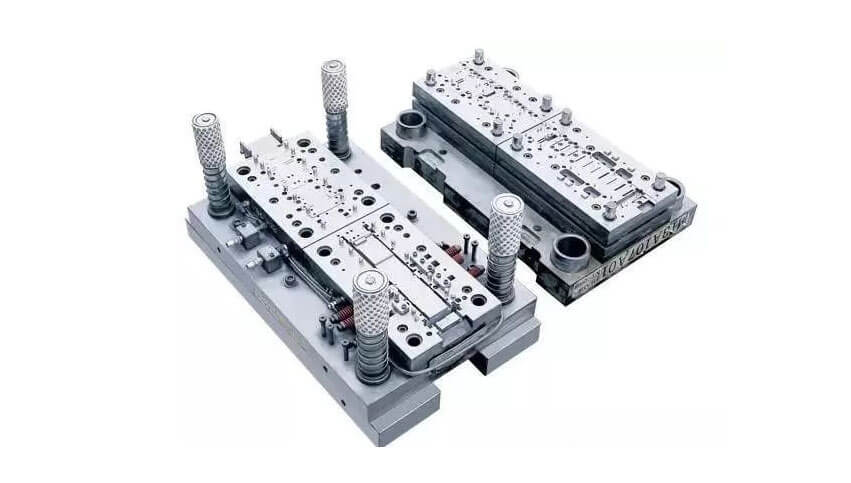Normally for stamping process like piercing, blanking & cutting craft, try to avoid using high hardness or very brittle materials. Because there’s tearing phenomenon in the blanking process, if material is too hard (carbon steel), it is very easy to be broken and cause bad cutting edge. So better to choose softer, fluid and elastic materials to abtain a better cutting edges. Like low zinc brass, etc..
Avoid Choosing Elastic Materials in Forming Process
Different from the stamping process, try to avoid using elasticity materials in the forming process, because the forming process needs to ensure a stable forming angle. The more elastic, the more rebound, which will easily lead to inadequate bending and need to pass Long-term tooling adjustment, increase forming process, etc. So material should have enough plasticity and a low yield point as much as possible, to ensure that the forming position is not easy to crack during forming and ensure a stable angle. Such as: low carbon steel, copper, aluminum, etc.

Try to Choose Materials with Better Plasticity for Deep Drawing Process
Choose a good plasticity material depends on the amount of tensile degeneration of the material. For example, with same deep drawing height, if material with poor plasticity, need more drawing steps or halfway annealing. When selecting deep drawing material, the smaller the ratio of its yield point to tensile strength, the better the drawing performance, and the greater the limit of one-time deformation is beneficial to reducing costs and ensuring drawing quality. At present, the most common drawing materials used are: low carbon steel, low zinc brass, pure aluminum and aluminum alloy, austenitic stainless steel, etc.
Try to Choose High-plasticity, Low-strength Materials for Forging, Cold Extrusion Process
Why select low strength and high plasticity material for forging & cold extrusion process, is to prevent material itself from being too resistant to cracks during the production process, need to take good fluidity, low yield point and low work hardening sensitivity into account. Common types of materials are: aluminum and aluminum alloys, brass, tin phosphor bronze, nickel, zinc, low carbon steel, etc.
Taboos in Forming and Bending Processes
1. Inner bending radius should not be too large
Except for plastic deformation there’s also elastic deformation during bending & forming process, the big inner radius is, the big rebound will be, and it will cause bending angle issue.
2. Bending punch radius should not be too small
If the punch with small bending angle, it is very easy to scratch the outside area. Normally for soft material radius should be the same as material thickness, hard material at least 1.5-2 times of material thickness.
3. Forming straight edge cannot be too short
To maintain bending position & bending angle, forming straight edge at least 2 times of material thickness.
4. Relationship between bending position and hole position
If bending position close to hole position, it very easy to cause deformation due for bending stripping. So to maintain the precision, better to follow below formula:
If t<2, ,l≥r+t; t≥2,l≥r+2t
Note: r is for bending inner radius, t is for material thickness.
© Copyright 2012 - 2023 CNstamping All rights reserved.
